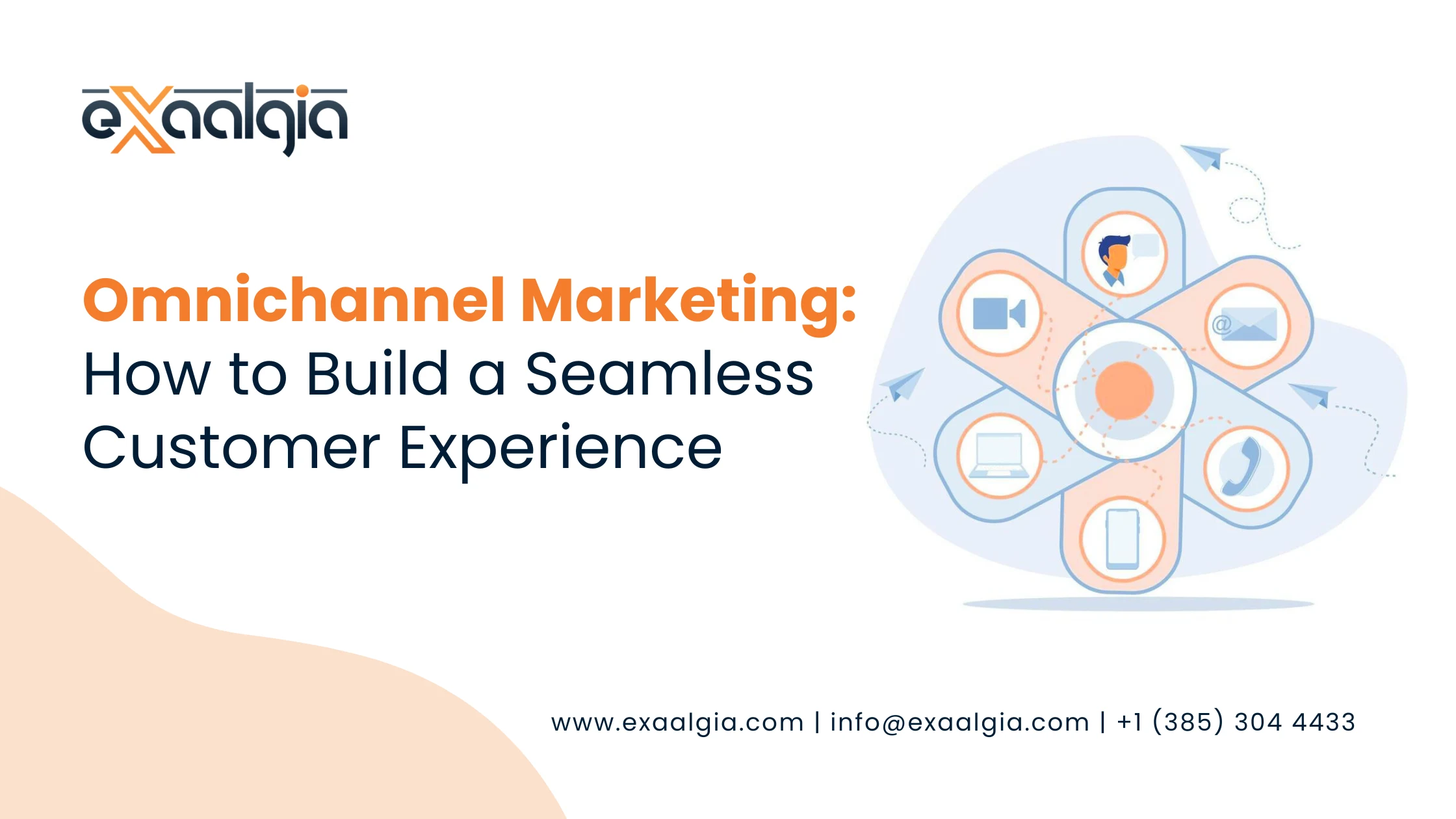If you wish to learn about Omnichannel Marketing, the approach that accomplishes this, look beyond a simple multichannel perspective and integrate all of the interactions into a single uniform customer experience. The book explores the knowledge of the concept of omnichannel marketing, its relevance, issues, and implementation strategies, providing actionable guidelines to businesses that look to cultivate their customer relationships and increase more conversions.
Omnichannel Marketing Explained
What Is Omnichannel Marketing?
Omnichannel Marketing is where all forms of marketing, sales, and customer service channels come together under the umbrella of a single customer experience. Each touch point-the glimpse of a website, social media interaction, the receipt of an email, or even a courteous customer engagement withers forth all at once, yielding to a frictionless journey.
For example, a consumer may browse a product on the website, they would receive a targeted e-mail reminder, another activity could be that the consumer adds the same item to the mobile app’s cart, lastly, the product is bought offline. Throughout that entire process, omnichannel marketing connects every interaction together to provide continuity and relevancy.
Omnichannel Marketing vs. Multichannel Marketing
Most marketers get multichannel marketing mixed up with omnichannel marketing. Multichannel marketing concentrates on having a presence on multiple platforms, but each channel is usually independent. Omnichannel marketing brings these channels together so that customer experiences are seamless, and data is exchanged between channels.
This is important to understand. Multichannel is all about reach, while omnichannel is all about relationships and experience. Customers gain the advantage of consistent messaging, seamless transitions, and enhanced engagement.
Many marketers confuse Multichannel and Omnichannel Marketing, but they’re not the same.
| Feature | Multichannel Marketing | Omnichannel Marketing |
| Channel Operation | Each channel works independently | All channels are connected and synchronized |
| Customer Data | Stored separately per channel | Unified and shared across all platforms |
| Experience | Varies across channels | Consistent experience everywhere |
| Focus | Channel performance | Customer journey |
| Measurement | Channel-based metrics | Journey-based analytics |
In short, Multichannel is about being present everywhere, while Omnichannel is about connecting everything.
Why Should You Consider Omnichannel Marketing?
Enhancing Customers’ Experience
Customer experience is central to omnichannel marketing. In an era where customers tend to jump between channels, frictionless transitions between channels ensure customers are never left hanging or wondering. Omnichannel track preference, shopping history, and behavior to provide personalization and consistency that create satisfaction and loyalty.
Deepening the Brand
Consistency in channels reinforces the brand image in the minds of customers. Every time a customer is exposed to the same imagery, tone, and message, they recognize and have faith in the brand. Recognition triggers action, which in turn reinforces the brand presence.
Personalization and Loyalty
With the omnichannel initiative, big data enables companies to offer personalized messages and deals, such that customers feel they are known and this will lead them to buy again and develop long term loyalty. Substantive customer relationships and retention rates are ignited by brands with the capacity to deliver a good omnichannel experience.
Revenue in terms of Conversions
Seamless experiences and personal interactions become conversion opportunities. The Business Review study discovered that shoppers who use an omnichannel approach spend more compared to single channel shoppers, either online or offline. Therefore, by combining the channels, a company can increase its conversion rate, and consequently, its overall revenue.
Overcoming Barriers in Omnichannel Marketing
Data Integration Challenges
The greatest technical obstacle is integrating information from CRMs, POS terminals, mobile applications, websites, and social media. The process may otherwise feel disconnected and negatively impactful on the intent behind it.
Organizational Silos
Marketing, sales, and support departments work almost independently of one another, creating disjointed experiences. A relation has to be established between these teams to create the actual omnichannel experience.
Consistent Branding
Multiple teams work with varying tones, images, or language, which breaks the customer journey. The brand must be represented correctly at every touch point.
Technology and Compliance
Acquiring the correct weapons requires an investment in terms of money, skill, and knowledge, along with compliance with privacy related obligations mandated by regulatory agencies like GDPR and CCPA. Brands must make every effort to achieve a balance between technology and compliance to protect the private information of the customer.
Best Practices for Omnichannel Marketing Strategy Implementation
Gathering and Analyzing Customer Data
Begin with aggregating information of the customer from all touchpoints, such as websites, your app, e-mail campaigns, and in-store. In examining data like this, a company can get insight into behavior, preferences, and issues. This first moment of insight creates the foundation for personalized offerings and decision making.
Map the Customer Journey
Customer journey mapping, from awareness to conversion to retention, keeps things straightforward for didactic engagement with a brand. Knowing customer touchpoints, decision points, and drop off points assists in developing strategies that minimize friction and improve their experience.
Select Channels and Integrate Them
Choose the channels that are solvents to your customers and establish integration there. It might be social media, emails, mobile apps, or physical retail stores. Ensure data and interactions pass freely on all platforms. The integration ensures that any data change will be effected in real time so that all the participating employees can have clear and consistent communication in real time.
Brand Consistency
Establish strict brand guidelines with respect to tone, visuals, and messaging. Every marketing, support, and sales team that works on these efforts must adhere to these guidelines to present a unified experience to customers.
Test, Measure, and Optimize
Measure the performance in terms of KPIs like conversion rates, engagement, retention, and revenues. Conduct A/B testing, review the results, and optimize campaigns accordingly. Omnichannel marketing being a natural process, it must continuously deal with changes in the behavior of customers.
How Leading Brands Use Omnichannel Marketing
Starbucks
Starbucks executes omnichannel brilliance to the extent that the mobile app generates an experience out of online ordering along with the store experience. Ordering in advance, paying online digitally, and earning rewards for a smooth and seamless experience.
Sephora
Online and offline commerce meet in Sephora. Transferring points, purchase history, and recommendations made sure that the customer has an integrated and bespoke experience.
Nike
Nike integrates apps, websites, and stores for tailored experiences and instant inventory availability, giving the customer the same integrated journey, whether purchasing online or in-store.
FAQs Regarding Omnichannel Marketing
What is Omnichannel Marketing actually?
Omnichannel Marketing is essentially unification of all marketing and sales channels to build a seamless, personalized experience and make it relevant on all platforms. Each customer gets continuity and relevance in each interaction.
How is Omnichannel Marketing different from Multichannel Marketing?
Multichannel marketing offers several platforms or interfaces but addresses each one separately. While in Omnichannel marketing all channels are connected. The second difference is with the interoperability of data. The Omnichannel strategy offers one set of data and experiences so that the interaction with the customer can be further enhanced.
Why is Omnichannel Marketing important for businesses?
Omnichannel Marketing enables brands to provide tailored and unified experiences on par with the customer expectations of today, which in turn boosts engagement, loyalty, and conversions, the minimum necessary for a competitive landscape’s uplift.
Which tools facilitate an Omnichannel Marketing strategy?
Tools that can consolidate customer data, automate campaigns, and track engagement on channels are HubSpot, Salesforce Marketing Cloud, Mailchimp, Hootsuite, and Google Analytics 4.
How do small businesses initiate Omnichannel Marketing?
Small businesses should start by selecting fundamental customer touchpoints, incorporating data capture, and piloting branding consistency for a few channels. Utilizing cost effective CRMs and marketing robots helps in scaling over time.
The Future of Omnichannel Marketing
The age of omnichannel marketing is rapidly becoming the force behind those brands large enough to stay relevant. With each customer touchpoint combined across digital and physical channels, companies are designing experiences that flow freely, are highly customized, and are thrilling.
When putting omnichannel into action, data consolidation, customer journey mapping, platform integration, brand unity, measuring and optimizing performance is paramount. The reward is tremendous with omnichannel marketing, commitment, increased brand recognition, increased conversions, and growth over the long term.







